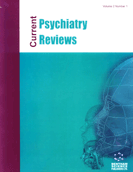Abstract
Dopamine and noradrenaline in the prefrontal cortex modulate superior cognitive functions and are implicated in the aetiology of depressive and psychotic symptoms. Experimental evidence reveals parallel variations in extracellular concentration of both catecholamines in the cerebral cortex. In this review, data are presented suggesting that extracellular dopamine in the cerebral cortex originates not only from dopaminergic terminals but also from noradrenergic ones, where it acts both as precursor for noradrenaline and as co-transmitter. Since the release of noradrenaline is controlled by alpha2-autoreceptors, it follows that release and extracellular concentration of both dopamine and noradrenaline in the cerebral cortex are controlled by alpha2-autoreceptors and noradrenaline transporter, whereas dopamine receptors and dopamine transporter do not seem to be involved in these processes. Atypical antipsychotics such as clozapine, and antidepressants such as mirtazapine, increase noradrenaline and dopamine release throughout the cerebral cortex, but not, or to a lesser extent, in subcortical areas. On the other hand, D2 selective drugs such as haloperidol, are potent in increasing dopamine levels in subcortical dopaminergic areas but are ineffective on dopamine and noradrenaline levels in the prefrontal cortex. Local stimulation or inhibition of locus coeruleus neurons by means of drug perfusion or electrical stimulation gives rise to parallel variations of noradrenaline and dopamine levels in the cerebral cortex, but not in prevalently dopaminergic subcortical areas. Extracellular dopamine of noradrenergic origin might represent the major portion of total extracellular dopamine not only in cortices with scarce dopaminergic innervation, such as the parietal and occipital cortex, but also in the densely innervated medial prefrontal cortex. In conclusion, drugs acting on the co-release mechanism of noradrenaline and dopamine may represent a tool with which to increase the selective output of dopamine in the cerebral cortex.
Keywords: Cerebral cortex, co-release, dopamine, microdialysis, noradrenaline
 10
10

